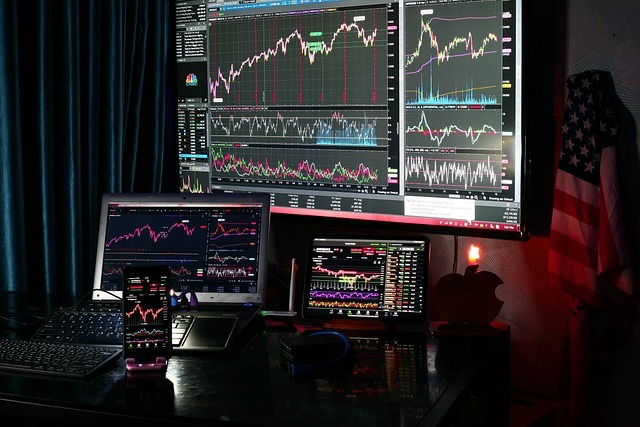
Updated Feb 2024
What is Range Trading?
It is a tactical approach in financial markets and a tranquil oasis amidst the tumultuous waters of volatility. At its core, it identifies a well-defined price range in which an asset’s value oscillates. Essentially, it’s a strategy of seizing opportunities by buying low and selling high or, conversely, selling high and buying low, all within the bounds of this price corridor.
The beauty of it lies in its suitability for markets characterized by placidity rather than tempestuous price swings. In these calmer waters, assets tend to consolidate, adhering to a specified price range, thereby creating a predictable pattern that can be harnessed to a trader’s advantage.
As a trader navigates the realm of range trading, the first step is to identify these price confines precisely. These boundaries are essentially the upper and lower limits within which the asset’s value tends to ebb and flow. The objective is to buy when the price nears the lower boundary, anticipating an upward swing within the range, and to sell when it approaches the upper limit, expecting a subsequent dip. It’s akin to harnessing the rhythmic tide of the market’s movement to turn a profit.
It is not merely a trading strategy; it’s a dance with market stability, where astute traders embrace the quietude to seek their rewards. In these serene moments, the fluctuations become predictable, offering opportunities to buy low and sell high or sell high and buy low, all while remaining within the defined price boundaries.
Benefits of Range Trading
Range trading is a strategy that offers several compelling advantages for traders. It is particularly appealing due to its potential for consistent returns. Unlike more speculative strategies, range trading relies on the predictability of price movements within a defined boundary, allowing traders to buy low and sell high systematically. This systematic approach can lead to steady gains, which may be more modest but are typically less volatile.
Risk management is another significant benefit of range trading. By setting straightforward entry and exit points within the established range, traders can control their exposure to considerable losses. This precision in planning trades helps to mitigate the emotional decision-making that often leads to increased risk.
Furthermore, range trading is not limited to a single market or asset class. It is a versatile strategy that can be applied across various markets, including stocks, forex, commodities, and cryptocurrencies. Each market’s unique characteristics offer different opportunities for range trading. For instance, the forex market’s frequent oscillations provide a dynamic environment for range-trading currency pairs, while the stock market’s price stability can offer more predictable range-bound movements.
The adaptability of range trading means it can be a suitable strategy regardless of market conditions. Whether in a bull market, where traders can capitalize on ranges within an overall uptrend, or in a bear market, where they can trade within the lower highs and lows, range trading can suit the prevailing market environment.
In essence, range trading is a disciplined, risk-averse, and adaptable strategy that can provide traders with a structured approach to achieving consistent returns across various markets.
The Mechanics of Range Trading
Range trading operates on the principle of price action within a defined boundary, relying on the predictability of price movements between established support and resistance levels. Traders look to buy at or near support, where prices tend to bounce back up and sell at or near resistance, where prices often fall back.
The strategy is methodical, akin to a rhythmic dance of buying low and selling high within the confines of the range. It requires a disciplined approach, with traders waiting for the right moments to enter and exit trades based on these predetermined levels.
For example, a trader might observe a stock that historically bounces back from a price of $50 and tops out around $60. They would then aim to buy the stock when it nears $50 and sell when it approaches $60, profiting from this observed range. The success of this strategy hinges on the trader’s ability to identify these levels and patiently execute trades within them accurately.
Identifying Trading Ranges
Identifying trading ranges is essential for range trading, akin to charting a course through fluctuating market conditions. It involves pinpointing the price boundaries where movements tend to stabilize, setting the stage for strategic entry and exit points.
Technical analysis is the primary tool for this task. It utilizes historical price data and chart patterns to outline the range’s upper resistance and lower support levels. Recurring price behaviours and consolidations often highlight these boundaries, which traders can exploit.
Moving averages and Bollinger Bands are critical indicators in this process. Moving averages help clarify the trend within the range, while Bollinger Bands adjust to volatility, signalling potential range-bound conditions when narrow. These indicators, combined with a thorough analysis of price patterns, assist traders in determining whether to anticipate a continuation within the range or prepare for a breakout.
This analytical approach is crucial for traders to navigate range-bound markets effectively, allowing them to harness the potential within the confines of price fluctuations.
Critical Strategies for Range Trading
Successful Range Trading Strategies
1. Breakout Trading: This strategy capitalizes on the momentum that follows a price breakout beyond its usual range. It’s about timing and acting when a stock moves beyond its typical highs or lows, often triggered by significant news or events. Traders use technical analysis to spot these moments and act quickly to ride the wave of the breakout.
2. Swing Trading: Swing traders make their moves based on the rhythmic price movements within a range. They buy at support levels, where prices bounce back, and sell at resistance levels, where prices often pull back. This strategy is about recognizing the ebb and flow of stock prices and taking advantage of these natural movements over several days or weeks.
3. Mean Reversion: This strategy is based on the idea that prices will eventually return to their average or mean. Traders look for when a stock has moved significantly away from its average price and trade on the assumption that it will revert. It requires patience and a good understanding of a stock’s historical performance.
Each of these strategies involves a different approach to the market’s ups and downs, but all require a solid understanding of market trends and the ability to manage risks effectively.
Tools and Indicators for Range Trading
In the complex realm of range trading, traders are akin to craftsmen, armed with various tools and indicators to sculpt their strategies and make informed decisions. These instruments are their guiding stars, offering insights into the intricate dance within price ranges. Among the tools in their arsenal are the Relative Strength Index (RSI), the Stochastic Oscillator, and Moving Averages, each a compass in its own right.
The Relative Strength Index (RSI) is a stalwart ally in the world of range trading. Like a seasoned guide, this indicator helps traders gauge the momentum of an asset’s price. It offers a numerical scale that ranges from 0 to 100, allowing traders to identify overbought and oversold conditions. When prices surge to extreme levels, RSI signals that it may be time to sell, anticipating a pullback, while in oversold territory, it suggests the potential for a buying opportunity.
Another invaluable instrument is the stochastic oscillator, which functions as a fine-tuned compass for range traders. It measures an asset’s price with its price range over a specific period, indicating when it’s time to buy or sell. Much like the ebb and flow of the tides, the Stochastic Oscillator identifies price swings within a range and helps traders time their actions for optimal results.
Moving Averages, in their various forms, serve as steady beacons for range traders. These indicators smooth out price data to reveal the underlying trend within a range. The simple moving average (SMA) and exponential moving average (EMA) are common choices, each offering insights into the price’s direction and potential entry and exit points.
Real-Life Range Trading Example
To grasp the essence of range trading, let’s embark on a journey through a real-life example within the stock market, where traders navigate the tides of price swings, much like skilled sailors who harness the wind to reach their destination.
Imagine you’re at the helm of trading Company XYZ, a voyage that unfolds within a range of $45 to $50 over the past few weeks. In this scenario, you are not navigating wild price surges or dramatic plunges but rather a contained, predictable range oscillating between these two thresholds. This is the heart of range trading.
As the price approaches the lower boundary at $45, you step in as a shrewd trader, recognizing this as a potential buying opportunity. Much like a seasoned mariner raising the anchor, you initiate a buy order, anticipating that the price will revert to its mean within the defined range. You wait patiently, knowing that the market, like the sea, has its ebb and flow.
When the price nears the upper boundary at $50, you hoist the sails, this time as a seller. It’s a moment of decision, like steering a ship through challenging waters. You execute a sell order with precision, acknowledging that the price has likely peaked within this range. It’s a dance of strategy and timing, like trimming the sails to catch the wind’s favourable gust.
Common Mistakes to Avoid
As traders set sail in the realm of range trading, they must navigate the opportunities and pitfalls that can lurk beneath the surface. Success in range trading requires vigilance, discipline, and an astute understanding of the common mistakes that can threaten even the most well-crafted strategies.
Overtrading, the siren’s call of the trading world, is a dangerous reef that traders must avoid. It’s the tendency to execute an excessive number of trades, often driven by impulsive decisions or the allure of quick profits. In range trading, overtrading can erode gains and undermine the strategy’s inherent patience. Like a sailor who steers through treacherous waters, traders must exercise restraint and only act when the conditions are favourable.
Neglecting risk management is another reef in the trading sea. With its diligent setting of stop-loss orders and capital preservation, risk management acts as a lifeboat in stormy market conditions. Failure to adhere to risk management principles can lead to substantial losses, and, like a ship without a rudder, traders can drift aimlessly in the market’s turbulence.
Adaptability is the compass that must guide range traders through changing market conditions. The failure to adjust to shifting tides can lead to losses. Range trading thrives in specific market environments, and traders must recognize when to shift their strategy if conditions evolve.
Psychological Aspects of Range Trading
In the intricate realm of range trading, where the ebb and flow of prices resemble the steady rhythm of the tides, the psychological aspect is often the undercurrent that separates success from failure. It’s a voyage of the mind, where traders must navigate the complex waters of emotions, discipline, and patience to master the art of range trading.
Discipline, like a rudder, steers traders through the unpredictable market. Range trading demands a steadfast commitment to the strategy, adhering to well-defined entry and exit points with unwavering resolve. It’s a discipline that resists the allure of impulsive decisions and the temptation to chase fleeting trends. Success in range trading hinges on the ability to execute the plan precisely.
Patience, like the sails that harness the wind’s power, is the force that drives range trading. Traders must wait for the opportune moments within the range, much like sailors waiting for the right winds to propel their ships. Patience guards against emotional overreactions and the impulse to trade when conditions are unfavorable.
Emotions, like unpredictable storms, can capsize the trading vessel. Emotional decisions often lead to losses as they deviate from the well-laid plan. The ability to keep emotions in check and remain calm when the market churns is the hallmark of a skilled range trader.
In this psychological voyage, traders must understand themselves as much as they know the markets. They must cultivate discipline, nurture patience, and conquer emotions. Range trading rewards those who can master this psychological journey, for within the well-defined boundaries of the range lies the canvas for both profit and self-mastery.
Conclusion
In conclusion, range trading is a versatile and robust strategy that empowers traders to harness predictable price movements within a clearly defined trading range. What sets range trading apart is its promise of consistency and a lowered level of risk. It offers a pathway to steady, albeit smaller, profits, making it an attractive choice for those who prioritize stability over the allure of high-risk, high-reward strategies.
However, it’s essential to emphasize that range trading is not a “get-rich-quick” scheme. Success in this strategy hinges on careful analysis, patience, and, most importantly, discipline. The capacity to adhere to a well-structured trading plan is paramount. Emotion-driven decisions have no place in range trading, as they can lead to unwanted deviations from the strategy.
As you embark on your journey through the intricate world of trading, consider range trading as a valuable addition to your trading arsenal. While it may not offer the thrills of speculative trading, it provides a solid foundation for consistent and sustainable returns. With meticulous analysis, unyielding discipline, and proper risk management practices, you can unlock the full potential of range trading and navigate the markets with confidence.
Discover Extraordinary and Informative Reads
The Allure of Market Manipulation: Exploring the Captivating Methods of Financial Control










